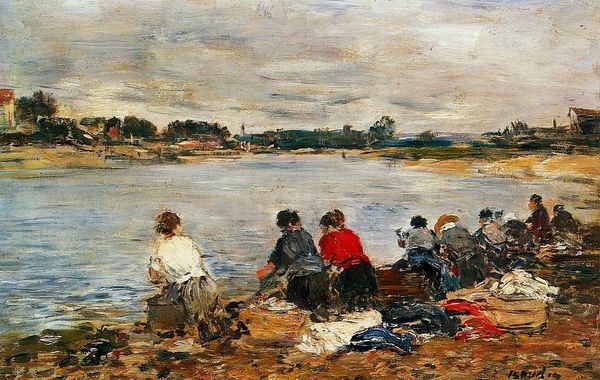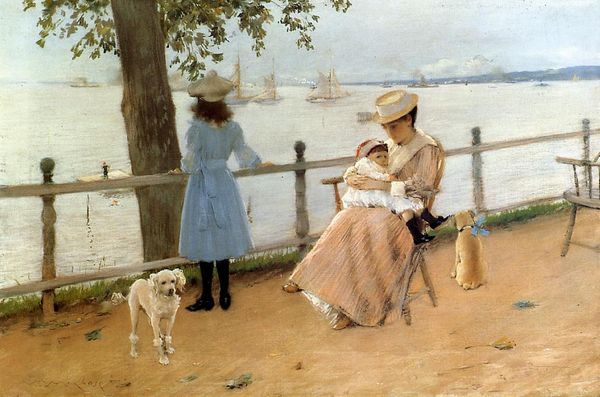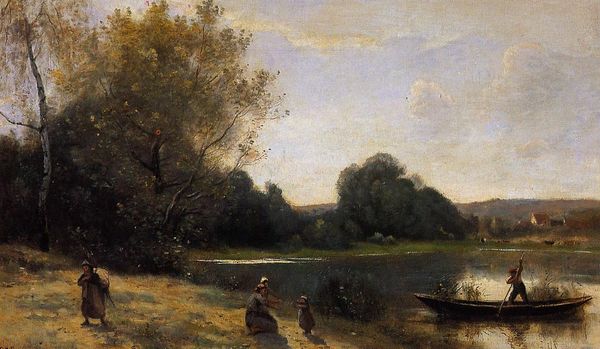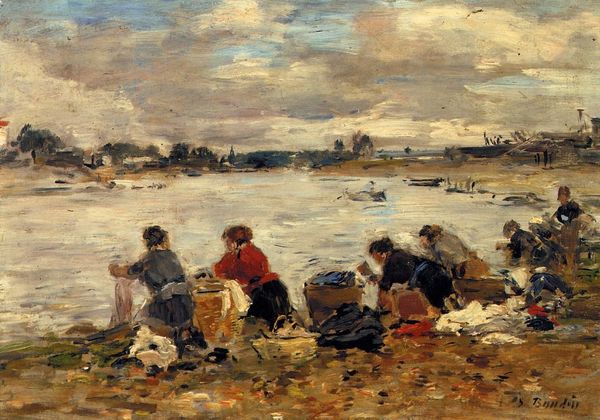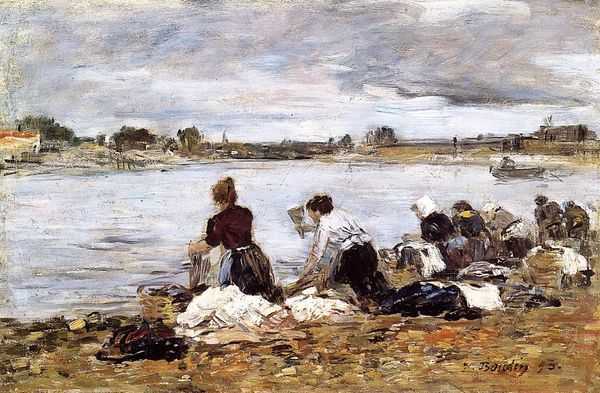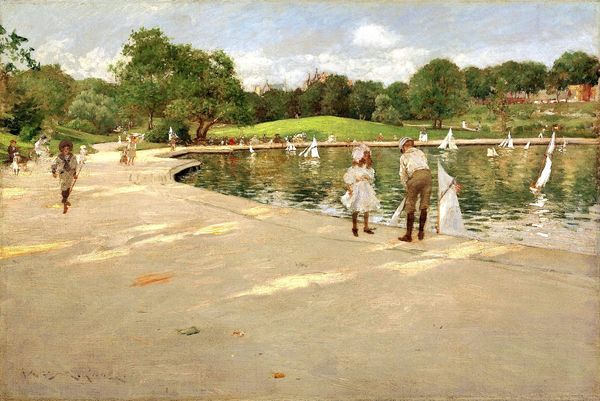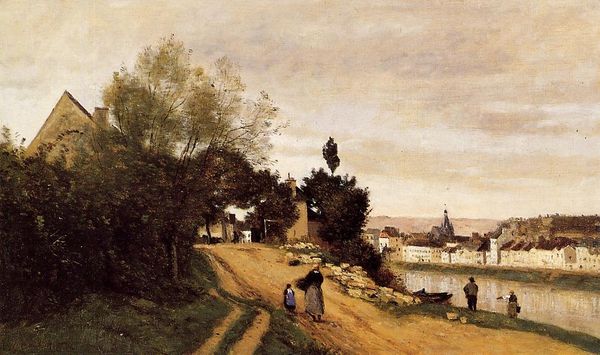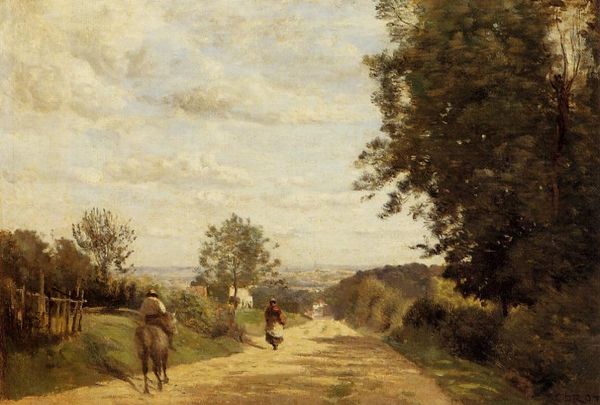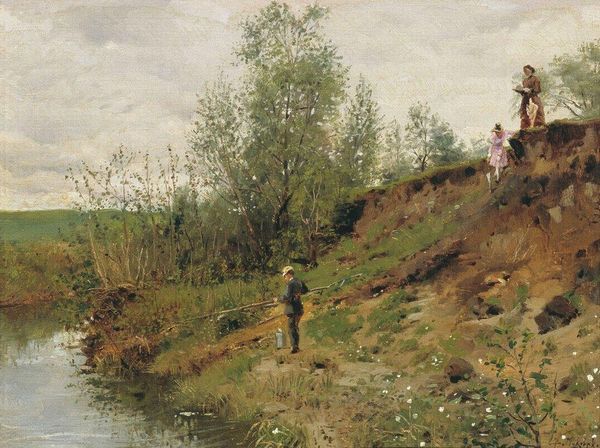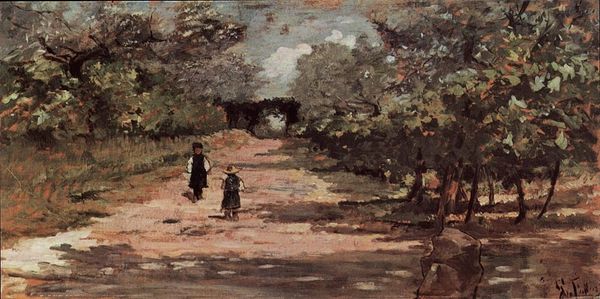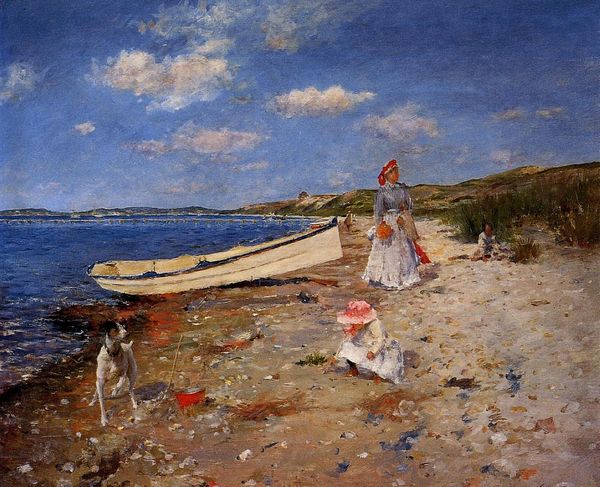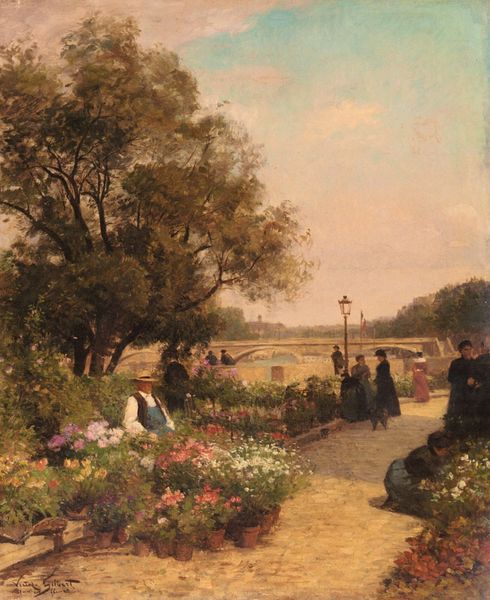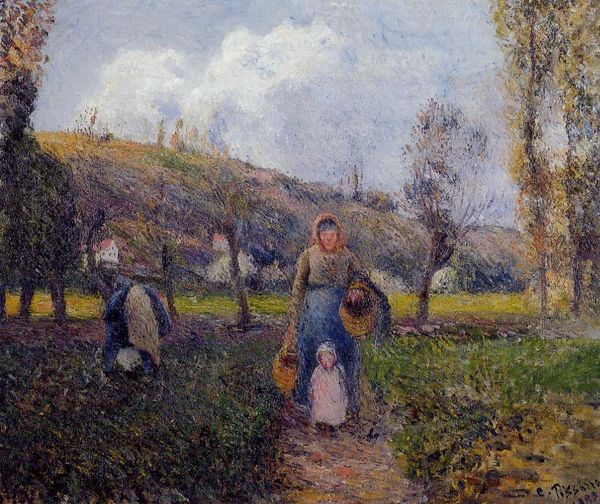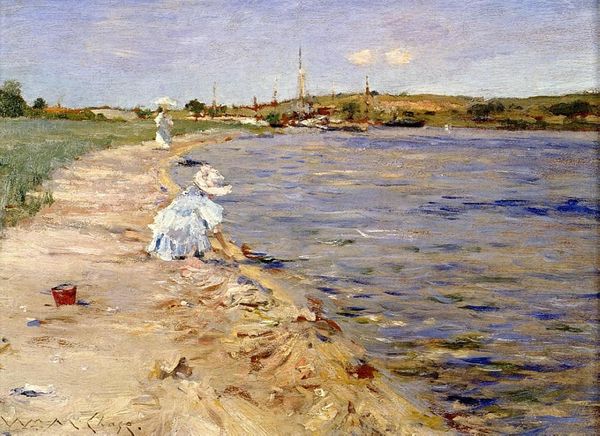
painting, plein-air, oil-paint
#
painting
#
impressionism
#
impressionist painting style
#
plein-air
#
oil-paint
#
landscape
#
impressionist landscape
#
figuration
#
oil painting
#
cityscape
#
genre-painting
Copyright: Public domain
Editor: Here we have William Merritt Chase's "Bath Beach – a Sketch," created in 1888 using oil paints and the plein-air technique. I’m struck by how ordinary the scene seems, yet there's almost a tension between the leisure and this…cannon. What’s your interpretation of that contrast? Curator: That's a keen observation. The cannon serves as more than just a historical artifact. It provokes us to consider the often-unacknowledged presence of power structures, specifically military, even within seemingly innocuous scenes of leisure. Doesn't the very placement of the cannon almost as a decorative object raise questions about the normalization of power and the potential for violence within everyday life, particularly for women and children in the late 19th century? Editor: I see what you mean. So the painting isn't just an Impressionistic scene of people enjoying a day at the beach, but it makes some comment about turn-of-the-century socio-politics? Curator: Precisely. Chase uses the visual language of Impressionism – fleeting moments, dappled light – to subtly underscore the complex social realities underpinning leisure. Notice how the figures, primarily women and children, are positioned relative to both the natural landscape and these imposed markers of control. This tension between freedom and restraint mirrors the limited societal roles prescribed to them, doesn't it? Editor: I had focused on the visual aspects, the light and colors, the broad brushstrokes. Now, looking at the piece through this lens, I'm more aware of how even seemingly carefree representations of public space are laden with historical context. Curator: Indeed, art has the profound ability to prompt us to view our shared realities through a different lens. Looking at art this way, we acknowledge not only the aesthetic surface, but also, perhaps more importantly, its dialogue with social realities. Editor: I’ll certainly look more carefully going forward at how artists often embed complex messages into ordinary scenes!
Comments
No comments
Be the first to comment and join the conversation on the ultimate creative platform.
